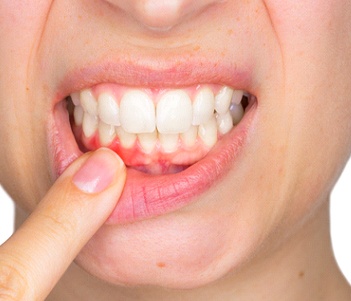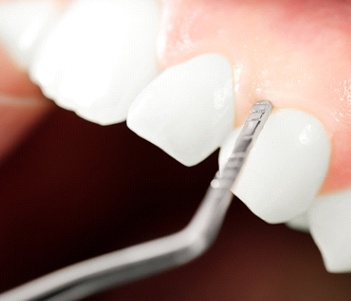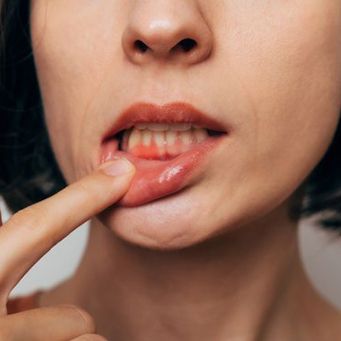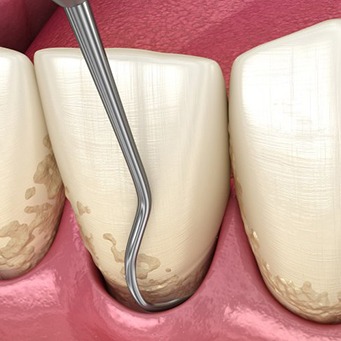
Gum Disease Therapy – Vero Beach, FL
Protecting Your Oral and Overall Health

Gum disease is one of the most common oral health problems in the world. For years, we’ve known that if left untreated, it can lead to permanent tissue damage, bone damage, and even tooth loss. However, recent findings have shown that this infection of the gums can affect your overall health in addition to your mouth. At Premier Dental, we want to ensure that our patients stay as healthy as possible, which is why you should know some of the most common symptoms of this disease and when you need treatment.
Common Signs of Gum Disease

Gum disease, also known as periodontal disease in Vero Beach, is an infection or inflammation of the gums that can lead to serious health issues if left untreated. This problem is typically caused by plaque buildup due to poor oral healthcare. Fortunately, if gum disease is caught early on, it can be completely reversed. That’s why it’s important to understand and recognize these common warning signs:
- Red or puffy gums
- Swollen or tender gums
- Gums that bleed when brushing or flossing
- Persistent bad breath
- Teeth that appear longer
- Pockets beneath teeth
- Sores in your mouth
You may also experience loose teeth or changes in your bite. This can occur because gum disease can damage the tissue that supports your smile. If you notice any of the above symptoms, contact our office right away for immediate treatment.
What Happens During a Periodontal Screening?

We provide careful periodontal screenings because early gum disease detection is key. During your routine checkup, we will use a tiny instrument called a probe to measure the depth of the pockets between your teeth and gums. These pockets are small free spaces at the bottom of each tooth. In a healthy mouth, your gum tissue will fit snugly around each tooth for a strong support.
Gum disease creates bigger pockets, which become perfect homes for plaque and bacteria that allows this disease to fester. By performing a periodontal screening at least once a year, we can measure the depth of these pockets and ensure that you’re free of gum disease. If we do notice symptoms, we’ll recommend treatment immediately.
Scaling & Root Planing

If your gum disease has reached a point where regular oral healthcare and dental cleanings won’t remedy the symptoms, we may recommend scaling and root planing. This treatment, sometimes called deep cleaning, can effectively remove disease-causing plaque and bacteria and make it harder for infection to occur in the future. While a single session is often enough to stop gum disease in its tracks, patients with severe gum disease may need recurring treatments every three to six months. If you are concerned about advanced gum infections, contact our office to take your first step toward a healthy smile!

Do You Need Scaling & Root Planing?
In its early stages, gum disease can often be resolved with improved oral hygiene. Advanced gum infections called periodontitis, on the other hand, must be addressed with professional treatment to prevent further damage such as jawbone erosion, soft tissue atrophy, tooth loss, and possibly dangerous secondary infections like sepsis. Symptoms of periodontitis include bleeding when brushing and flossing, receding gumline, persistent bad breath (halitosis), visible plaque accumulations, and swollen or puffy gums.

The Process of Scaling & Root Planing
Deep cleaning of the gum tissue usually requires two appointments, and the process can be broken into two parts. Those are:
- Scaling: Our dentist uses a special device called a scaler to eliminate plaque and tartar on the surface of the teeth and in the pockets of the gums.
- Planing: Our dentist removes hardened accumulations of germs from along the roots of the teeth beneath the gumline to prevent future infections and encourage the enamel to reintegrate with the soft tissues.

Aftercare Tips for Scaling & Root Planing
Scaling and root planing can be an intensive process, so you may need a few weeks for your teeth and gums to recover afterward. You may experience discomfort and increased sensitivity while healing, but you can keep your recovery process as smooth as possible by adhering to the following rules:
- Rinse with a solution of a quarter teaspoon of salt and eight ounces of warm water after meals and snacks to reduce irritation and remove food debris.
- Brush with short, gentle, circular strokes.
- Avoid foods and beverages that are hot, spicy, acidic, or alcoholic.
- Abstain from using tobacco products.
- Stick to a soft diet that excludes chewy, sticky, and crunchy items for at least forty-eight hours.
- Refrain from intensive physical activity immediately after the treatment.